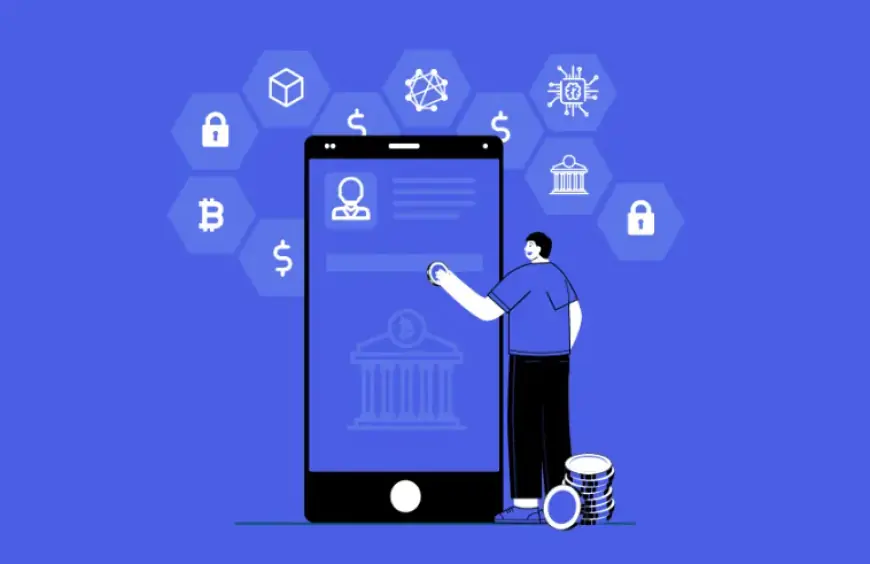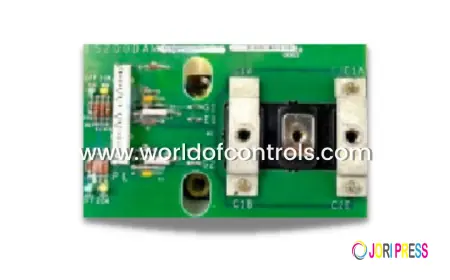The Future of Crypto Token Development: From Smart Contracts to AI Integration

Crypto token development has become one of the most transformative forces in the digital economy. What started as simple blockchain experiments has evolved into a full-scale movement where finance, technology, and digital ownership intersect. As more businesses, investors, and developers enter the blockchain space, the process of token creation is shifting from basic functionality to complex ecosystems driven by automation, interoperability, and artificial intelligence.
Today’s crypto token development landscape is not only about issuing coins or digital assets; it’s about building programmable economies that can operate independently of traditional systems. This shift is redefining how value is created, transferred, and governed. In the coming years, the combination of smart contracts and AI will reshape the architecture of token economies and the work of every token development company operating in the market.
The Evolution of Crypto Tokens
In the early years of blockchain, tokens were simple digital assets built on existing platforms like Bitcoin or Ethereum. Their main purpose was to represent value or utility within a specific ecosystem. The introduction of the ERC-20 standard on Ethereum provided a foundation for developers to create tokens easily and securely. This framework allowed thousands of tokens to launch, sparking the initial coin offering (ICO) boom and laying the groundwork for a global token economy.
Over time, tokens have evolved beyond fundraising tools. They now represent diverse functions — from governance rights to access credentials and financial derivatives. Decentralized finance (DeFi) protocols use tokens as liquidity instruments, gaming platforms use them as in-game currencies, and enterprises use them to represent real-world assets like property, art, and intellectual rights.
The maturity of token standards, the rise of smart contracts, and the adoption of blockchain by major industries have created a new wave of innovation. Crypto token development today involves complex tokenomics, compliance systems, automation frameworks, and integration with other digital technologies.
Smart Contracts as the Core of Token Development
Smart contracts are the backbone of crypto token development. These self-executing agreements enforce the rules of transactions without requiring intermediaries. They define how tokens are minted, transferred, or destroyed. More importantly, they control how users interact with decentralized applications and how developers build financial or operational systems on blockchain networks.
A token development company typically begins its process by designing the smart contract architecture. This involves defining the token’s properties — such as total supply, divisibility, transferability, and governance mechanisms. The contract then automates all functions related to token issuance and distribution. This ensures security, transparency, and predictability across all network operations.
The future of smart contracts is moving toward cross-chain functionality. Developers are building tokens that can operate across multiple blockchain ecosystems. This approach eliminates the limitations of single-chain architecture, allowing tokens to move seamlessly between Ethereum, Binance Smart Chain, Polygon, Solana, and other networks.
Smart contract upgradability is also becoming an essential part of modern token design. Instead of deploying static contracts, developers now use modular frameworks that allow future updates without disrupting existing token holders. This flexibility is crucial as blockchain technology continues to evolve rapidly.
The Role of Tokenomics in Sustainable Development
Behind every successful crypto token lies a well-structured economic model — tokenomics. Tokenomics defines how a token functions within its ecosystem, how value circulates, and how incentives align among users, investors, and developers.
In early projects, tokenomics was often an afterthought. Many tokens lacked sustainable value models and depended purely on speculation. Today, token development companies prioritize designing balanced ecosystems where demand and utility drive growth.
Modern tokenomics focuses on three core areas: supply mechanics, distribution, and governance.
-
Supply mechanics determine the token’s scarcity or inflation model. Some tokens have a fixed cap like Bitcoin, while others follow a dynamic or deflationary model that adjusts based on network activity.
-
Distribution strategies ensure that tokens reach active participants instead of being concentrated in a few hands. Fair launches, staking rewards, and community incentives are common mechanisms.
-
Governance gives token holders the right to influence protocol decisions, creating a sense of ownership and long-term commitment.
The use of data analytics and behavioral modeling is also entering the tokenomics space. Developers now simulate token behavior under different market conditions to avoid unsustainable inflation or rapid devaluation. These practices make token creation more scientific and less speculative, leading to ecosystems that can survive beyond short-term hype.
Security and Compliance as Core Priorities
As crypto markets mature, regulators are paying closer attention to token issuance. The next phase of crypto token development will focus heavily on compliance, auditability, and user protection. Tokens that meet security and regulatory standards are more likely to attract institutional investors and enterprise users.
Security audits have become a standard step for every token development company. Before launch, developers perform code reviews and penetration testing to identify vulnerabilities. Common threats include reentrancy attacks, overflow bugs, and governance exploits. Automated auditing tools and bug bounty programs are helping strengthen token ecosystems and reduce risks of major breaches.
In addition, token creators are increasingly incorporating compliance features directly into smart contracts. For instance, Know-Your-Customer (KYC) and Anti-Money Laundering (AML) checks can be integrated through permissioned contract layers. These measures allow regulated financial institutions to interact safely with blockchain networks while maintaining transparency.
Regulatory adaptation will shape how new tokens are designed. Developers must balance decentralization with accountability. As a result, token development companies are evolving into multidisciplinary teams that combine legal, technical, and financial expertise to ensure project sustainability.
Interoperability and Cross-Chain Token Development
Blockchain interoperability is becoming one of the strongest forces driving innovation. The crypto market no longer operates in isolation. Tokens need to move across multiple blockchains, interact with various protocols, and serve as bridges between ecosystems.
Cross-chain token development enables this seamless connectivity. It allows users to transfer assets between networks without relying on centralized exchanges. Technologies like wrapped tokens, atomic swaps, and interoperability protocols are making this possible.
For example, a token created on Ethereum can now be used on Binance Smart Chain or Polygon without losing its value or functionality. This development enhances liquidity, improves usability, and reduces transaction fees for users.
For a token development company, cross-chain design introduces new challenges and opportunities. Developers must ensure compatibility with multiple standards and security models. They also need to build flexible token bridges that can adapt to future upgrades. The trend toward multi-chain architecture is likely to continue as more networks adopt interoperability solutions.
Integration of Artificial Intelligence in Token Development
The integration of artificial intelligence marks the next major step in crypto token development. AI is being used to automate decision-making, optimize tokenomics, and enhance user experiences within decentralized systems.
One of the key uses of AI is in predictive modeling. Machine learning algorithms can analyze on-chain data, market behavior, and user activity to forecast trends. This helps developers fine-tune token supply mechanisms, staking rewards, or governance models based on real-time insights.
AI-driven automation is also improving the security and maintenance of smart contracts. Intelligent systems can detect unusual activity or potential vulnerabilities before they lead to exploits. They can also manage routine network functions, reducing the need for manual intervention.
For a token development company, AI integration represents a major efficiency boost. Development cycles become faster, error detection becomes more accurate, and user personalization becomes easier. AI systems can automatically adjust parameters within a token ecosystem to maintain balance, such as modifying inflation rates or reward structures based on user engagement data.
Moreover, the intersection of AI and blockchain is enabling new forms of token utility. Tokens can now be tied to data ownership, AI computation rights, or access to decentralized machine learning networks. These hybrid models will likely dominate the next generation of token ecosystems.
Real-World Asset Tokenization and Enterprise Adoption
Another growing direction for crypto token development is the tokenization of real-world assets. Companies are using blockchain to represent ownership of physical or financial assets such as real estate, commodities, carbon credits, or equities. These asset-backed tokens increase liquidity, reduce transaction costs, and make fractional ownership possible.
For enterprises, tokenization introduces transparency and automation into traditional financial systems. Smart contracts can handle dividend payments, compliance checks, and settlement processes instantly. This eliminates layers of intermediaries and reduces operational costs.
A token development company working in this space focuses on integrating blockchain infrastructure with existing business systems. The goal is to create tokens that comply with corporate regulations while maintaining the security and efficiency of decentralized technology.
As tokenization expands, new market categories are emerging, such as security tokens, utility tokens, and governance tokens, each with distinct roles and compliance requirements. This diversification will broaden the reach of blockchain far beyond cryptocurrency enthusiasts, bringing more institutional participation into the space.
The Rise of Decentralized Autonomous Organizations (DAOs)
The concept of decentralized governance is another major outcome of advanced crypto token development. Decentralized Autonomous Organizations (DAOs) use tokens as voting instruments, allowing communities to make decisions collectively without central management.
DAOs depend heavily on smart contracts to execute governance decisions automatically. Every proposal, vote, and action is recorded on-chain. Token holders can participate directly in protocol upgrades, funding allocations, and ecosystem changes.
This model is redefining corporate and community management. Instead of traditional ownership structures, DAOs distribute power proportionally among participants. For a token development company, building DAO-compatible tokens requires careful attention to governance logic, voting weight mechanisms, and incentive systems that encourage active participation.
As DAOs continue to grow, they will shape how businesses and communities organize around blockchain-based economies. The success of these systems depends on the balance between automation and accountability, a balance made possible by integrating smart contracts with evolving AI governance tools.
The Next Frontier: Smart and Adaptive Token Systems
The most exciting stage of crypto token development lies in the creation of adaptive token systems. These are tokens that respond dynamically to user behavior, market conditions, or network activity.
Instead of having fixed supply or reward mechanisms, adaptive tokens can modify their parameters automatically. For example, staking rewards might adjust based on total network participation, or transaction fees might fluctuate with network demand. AI algorithms can manage these adjustments, maintaining stability and fairness across the system.
Adaptive tokens could also play a major role in decentralized identity and data ownership. With AI analyzing behavioral data securely on-chain, users could control and monetize their digital identities through token-based systems. This concept ties directly into the growing focus on privacy-preserving technologies and user data sovereignty.
The future of token ecosystems will revolve around these intelligent, self-regulating systems. A token development company focusing on adaptability and automation will likely lead the next generation of blockchain innovation.
Challenges on the Road Ahead
While the future looks promising, several challenges remain in the crypto token development landscape. Scalability is still a key limitation for many blockchains. High transaction costs and network congestion can reduce user adoption. Developers are exploring layer-two solutions, sharding, and zero-knowledge proofs to address these issues.
Regulation remains another complex area. As governments and financial authorities create frameworks for digital assets, token projects must adapt quickly to stay compliant. This requires continuous legal monitoring and flexible design strategies from every token development company.
Finally, market volatility continues to influence token success. Without sustainable utility or community support, tokens risk losing value quickly. Future projects must focus on building ecosystems where real-world use cases support long-term growth rather than short-term speculation.
Conclusion
The evolution of crypto token development reflects the broader journey of blockchain technology — from simple digital assets to complex, intelligent ecosystems. Smart contracts laid the foundation by introducing automation and trustless execution. Now, artificial intelligence is taking this innovation further by enabling adaptive, data-driven token economies.
As token ecosystems grow more integrated with AI, cross-chain protocols, and real-world assets, the responsibilities of every token development company are expanding. The next generation of developers will not just write code but design digital economies governed by transparency, efficiency, and adaptability.
The fusion of blockchain and AI will redefine how humans interact with digital value. Tokens will no longer just represent ownership or utility; they will embody logic, intelligence, and autonomy. The journey from smart contracts to AI integration marks the beginning of a new era — one where decentralized technology truly becomes a living, evolving system at the heart of the global economy.
What's Your Reaction?
 Like
0
Like
0
 Dislike
0
Dislike
0
 Love
0
Love
0
 Funny
0
Funny
0
 Angry
0
Angry
0
 Sad
0
Sad
0
 Wow
0
Wow
0












































